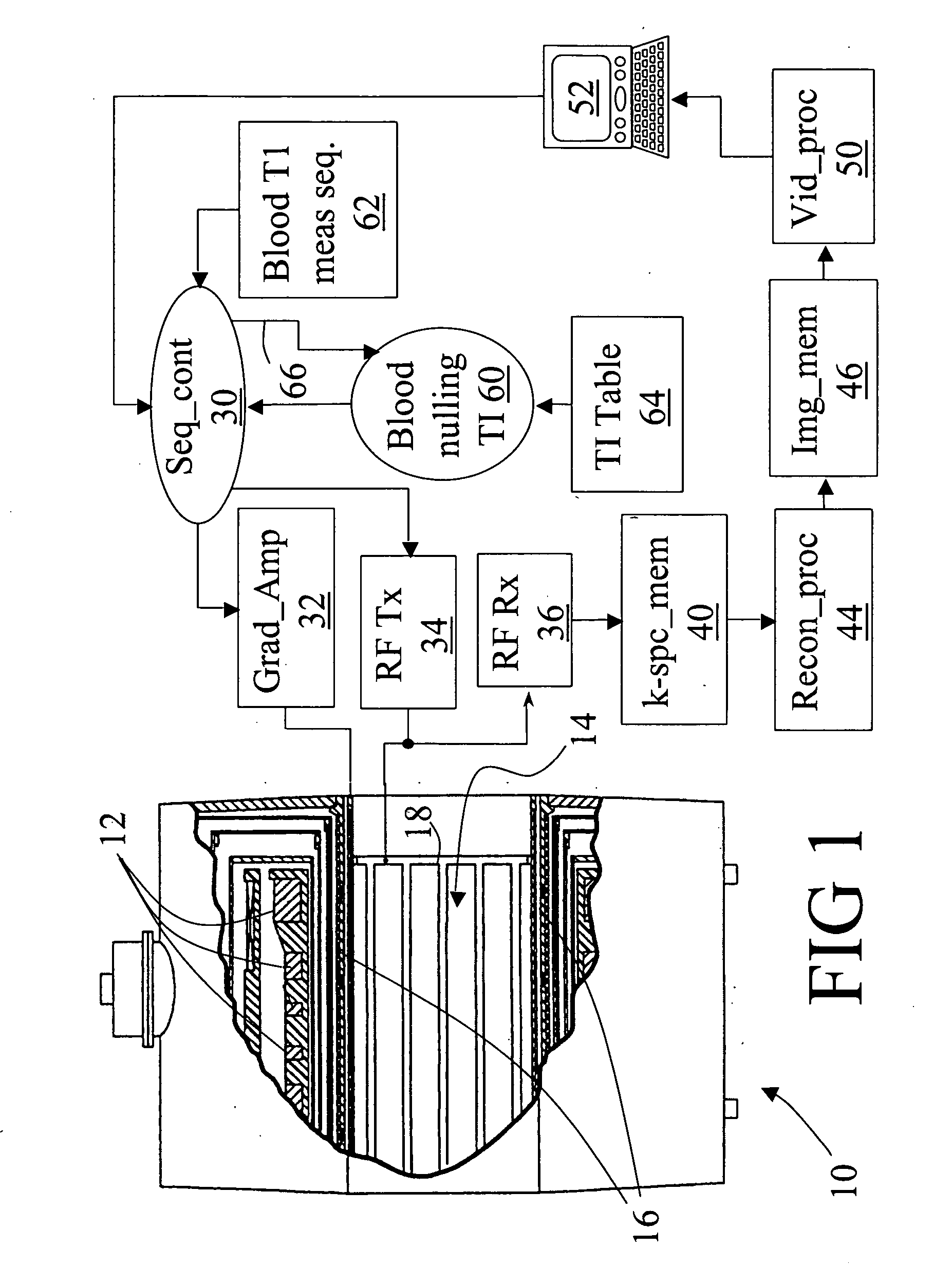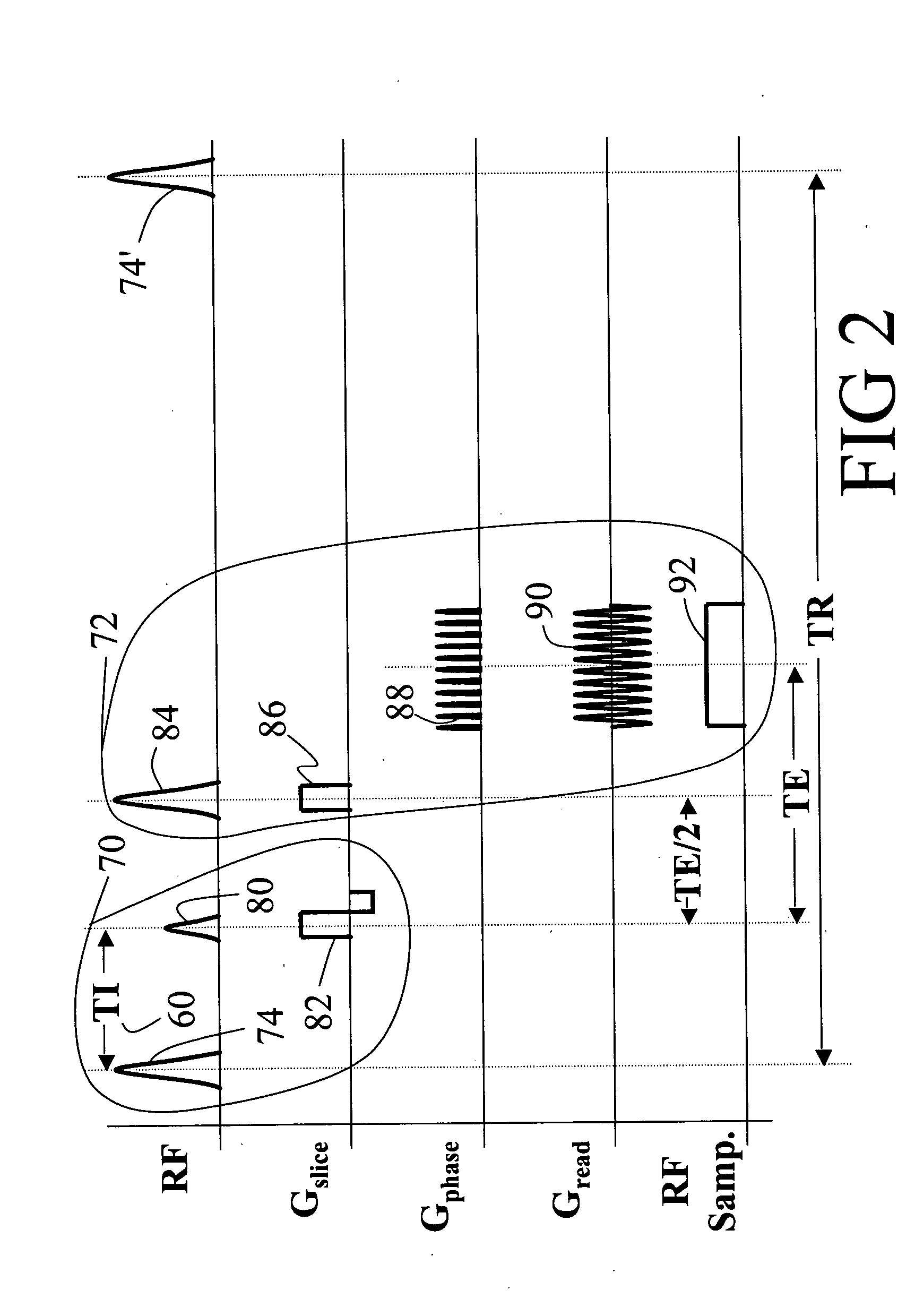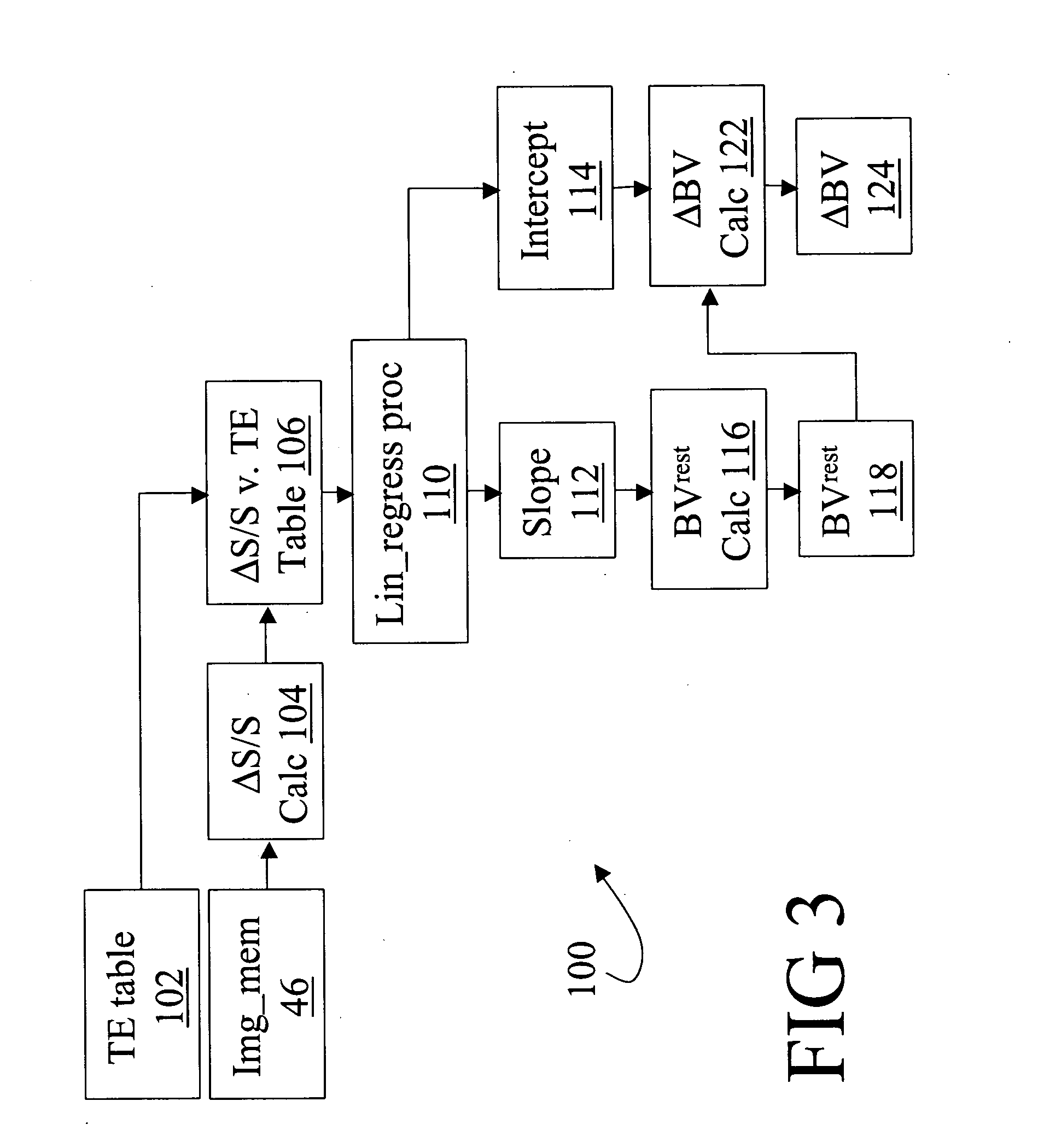Microvascular blood volume magnetic resonance imaging
a magnetic resonance imaging and microvascular technology, applied in the field of diagnostic imaging arts, can solve the problems of not providing a direct measure of blood volume, requiring contrast agents, and existing techniques generally not distinguishing between blood in large blood vessels
- Summary
- Abstract
- Description
- Claims
- Application Information
AI Technical Summary
Benefits of technology
Problems solved by technology
Method used
Image
Examples
Embodiment Construction
[0019] With reference to FIG. 1, a magnetic resonance imaging scanner 10 includes main magnet coils 12, which are preferably superconducting coils, although resistive main magnet coils or a permanent magnet can also be employed. The main magnet coils 12 are energized to generate a substantially uniform main magnetic field in an examination region 14. Magnetic field gradient coils 16 produce gradients in selected spatial directions to spatially encode magnetic resonances that are generated by energizing a radio frequency coil 18. In FIG. 1, a whole-body radio frequency coil 18 is shown; however, local coils such as head coils, phased radio frequency coil arrays, SENSE coils, and the like can be used instead of or in conjunction with the whole-body radio frequency coil 18 to excite magnetic resonances and / or to detect magnetic resonance echoes.
[0020] A magnetic resonance sequence controller 30 coordinates and controls a radio frequency transmitter 34 that is coupled to the whole-body...
PUM
 Login to View More
Login to View More Abstract
Description
Claims
Application Information
 Login to View More
Login to View More - R&D
- Intellectual Property
- Life Sciences
- Materials
- Tech Scout
- Unparalleled Data Quality
- Higher Quality Content
- 60% Fewer Hallucinations
Browse by: Latest US Patents, China's latest patents, Technical Efficacy Thesaurus, Application Domain, Technology Topic, Popular Technical Reports.
© 2025 PatSnap. All rights reserved.Legal|Privacy policy|Modern Slavery Act Transparency Statement|Sitemap|About US| Contact US: help@patsnap.com



